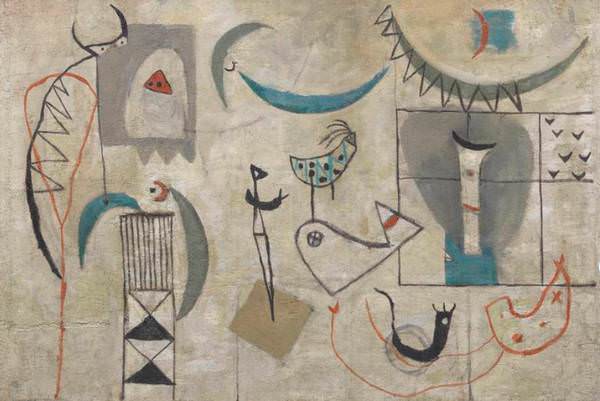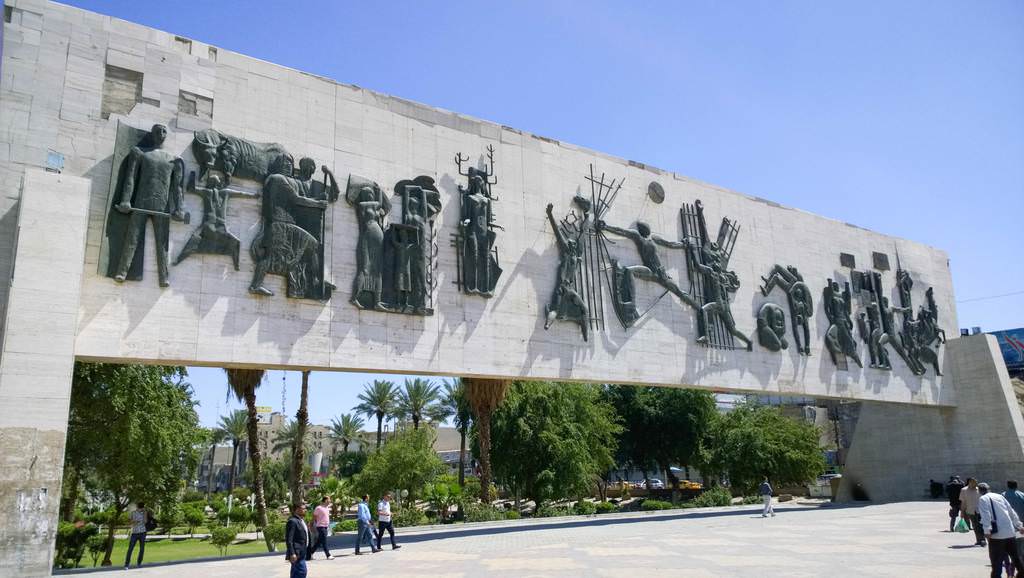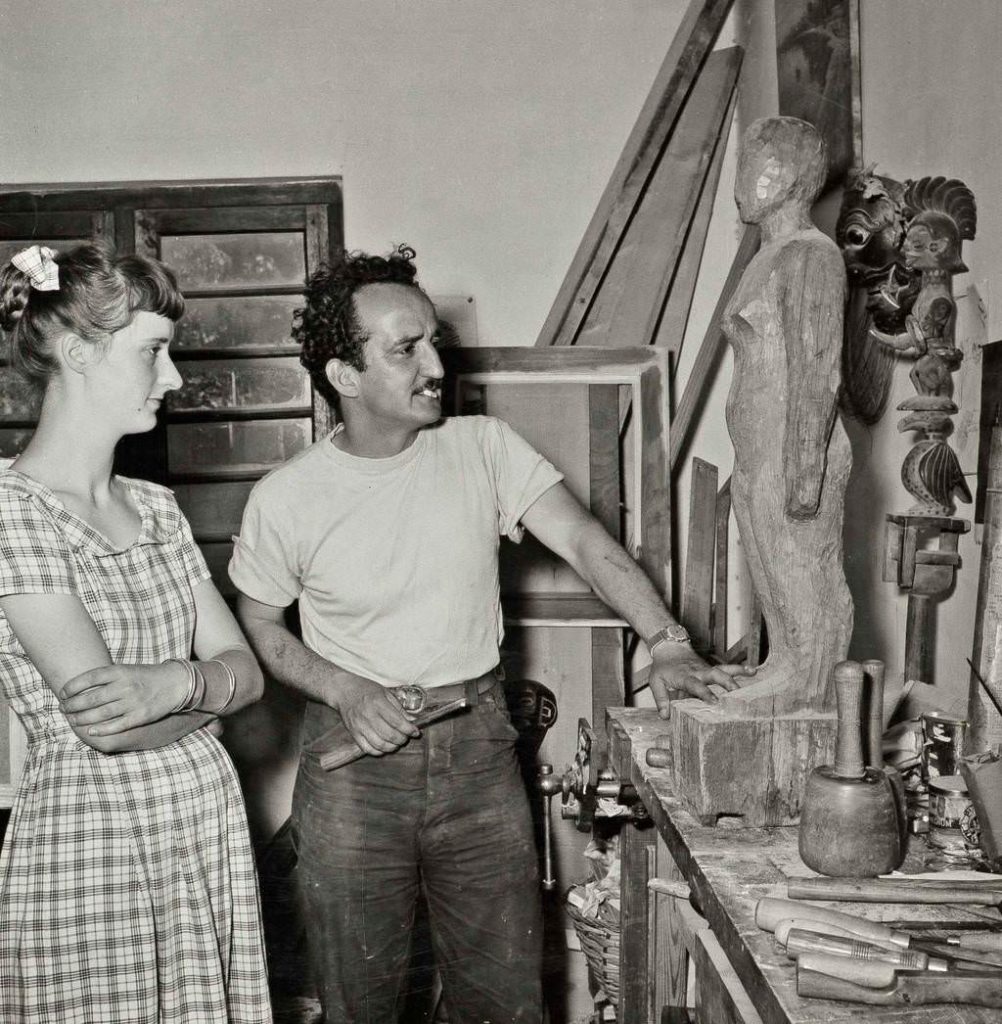A central figure in Iraq’s 20th century cultural scene, Selim was responsible for some of the country’s most important post-revolution art.

In the morning of Tuesday January 24, 1961, reports emerged from Baghdad’s Republican Hospital, in the neighbourhood of Rusafa, that the prominent Iraqi artist Jewad Selim had been admitted to hospital after having a stroke while he was dining the night before with his close friend, the artist Dr Khaled Al Qassab.
Selim was at the peak of his artistic production, having been commissioned by Prime Minister Abd Al Karim Qasim to create a monument to commemorate the Revolution of 1958 together with his other close friend, the Iraqi architect Rifaat Chadirji. In imagining the scale of the monument, one that would fit the occasion, Chadirji suggested to Selim: “Let’s make a banner that will remain hoisted forever!”
News of Selim’s stroke could not have come at a worse time. The monument on Tahrir (Liberation) Square was just being erected, with one sole bronze sculpture fully installed. The project was due for completion that summer in time for the Revolution’s third anniversary. No effort was spared to save Selim. Writing in 1984, his friend Jabra Ibrahim Jabra concurred that “(a)round his bed gathered the best doctors in town trying to help him pull through”.
Leading the team of doctors to save the artist was the prominent Mosul-born academic and physician Dr Salem F Al Damluji, who trained at the Royal Teaching Hospital in Baghdad. Dr Al Qassab noted in his memoirs that Lorna, Selim’s wife, was also present at Ward 8, and that Jewad Selim’s condition had initially improved before his tumbling blood pressure led to breathing difficulties. In his last moments, as per Al Qassab’s retelling, Selim turned to his loyal wife and said, “Imagine I see you now as an angel. Imagine you, Lorna, are an angel.”

Shortly thereafter, Iraq lost what many consider to have been the country’s leading artist and an icon of modernity.
The mourning of Jewad Selim’s passing on Monday, January 23, 1961 lasted for years to come. Even decades later, in 1989, Ismail Fattah, his student at the Institute of Fine Arts in Baghdad, would create a painting as a homage to his former mentor. Other artists who continue to celebrate Jewad’s legacy include Dia Azzawi and Nazar Yahya, while Lorna, his widow and peer from the Slade School of Fine Art in London, paid homage to her late husband by supervising the completion of the Freedom Monument.
Just over 60 years later, in November, 2021 I visited Baghdad for the first time, fulfilling a lifelong dream. I initially kept the visit discreet even from my mum, hoping not to worry her. Iraq, after all, has witnessed a string of events and news coverage that would make some potential visitors think twice before embarking on a visit. Having collected modern art from the Arab World for almost two decades, I have always had an urge to visit all of the Arab states, and Iraq was on the top of my bucket list. I could feign a number of compelling reasons to visit but in truth it was Jewad Selim’s Freedom Monument that drew me, like a sacred site that I had to visit. After all, I must have stared at photos of it for countless hours, admiring it from every possible photographed angle.
I went to Baghdad with all sorts of notions in mind that were thankfully dispelled the moment my eyes saw the farm fields surrounding the airport as we landed. As we drove on the palm tree-lined avenue from the airport to the city, my eyes started to wander, my face drew closer to the window. I wanted to absorb as much of Baghdad as possible.

I asked the driver to explain what we were seeing and driving by. “This is the Green Zone…that’s Saddam’s former palace, abandoned…Here’s the Prime Minister’s Office,” I was told. My heart was racing. Can we just get to the Freedom Monument already, I kept thinking to myself. “That’s the Victory Arch over there behind the bridge.” We race in our Toyota 4×4 and I get dropped off on the side of a square. I see it, but it’s not registering. I know it’s there, but am I really here?
All sorts of strange thoughts came to mind and I could hear my Iraqi hosts say, “Ha, shrayek?” (So, what do you think?). I was silent for minutes on end. The Freedom Monument, measuring 10 metres in height and 50 metres in length, was everything I thought it would be and more. The 14 life size bronze figures that I have admired on a 2D screen or book were protruding; they looked almost animated.
Leaving the Freedom Monument behind, I visited The Iraq Museum with its second-to-none collection of Assyrian, Babylonian and Sumerian artefacts. I decided to forgo the chauffeur-driven vehicle and decided to continue my journey around Baghdad in taxis and the Coaster bus in the company of three Iraqi friends. We had lunch at Al Ameer Restaurant in Karrada and shared the best pomegranate juice I ever tasted at Hajji Zabala, near Al Mutanabbi street. Perhaps the most surprising site visit for me in Baghdad was The Martyrs’ Monument designed by the artist Ismail Fattah Al Turk in the 1980s to commemorate those whose lives were lost in the Iraq-Iran War. Facing the large, blue split domes I sensed a feeling of spirituality and even divine presence.
Before leaving Baghdad on that all too short trip, I once again visited the Freedom Monument for one last goodbye. I imagined Jewad Selim, on a cold January morning in 1961, hoisting what was the first bronze figure onto Chadirji’s concrete base. Standing there, I took a few steps back and thought to myself, “You may both be gone, but your banner is still hoisted.”
This article was originally published in The National on December 28, 2021. A screenshot of this article is available here.